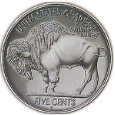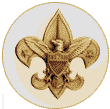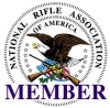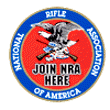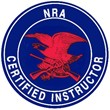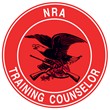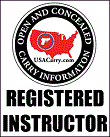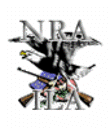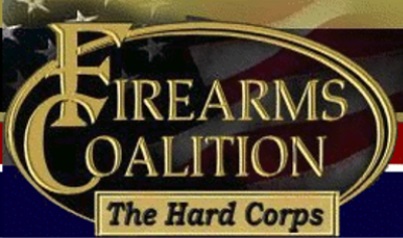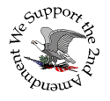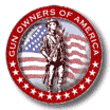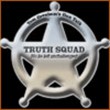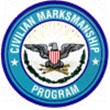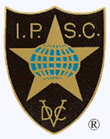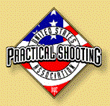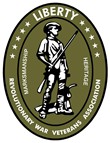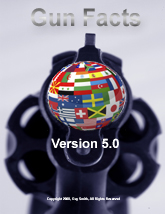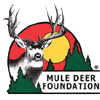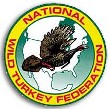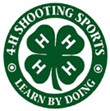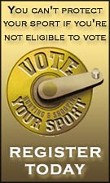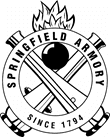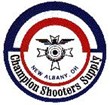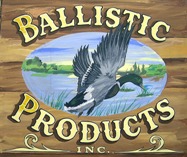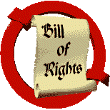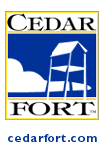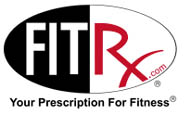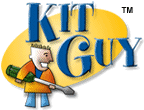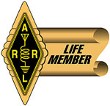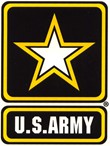| +P: Designates that ammunition that is loaded to a higher pressure. This is usually marked on the cartridge case. Use this ammo only in firearms specially designed for these higher pressures as recommended by the gun's manufacturer.
+P+: Ammunition loaded to even higher pressure than +P. Again, use only in guns specially designed for this load. Typically used in defense situations and not for target shooting or general plinking.
ACP: Abbreviation for "Automatic Colt Pistol", a line of cartridges of which the most popular is the .45 ACP.
Action: The combination of parts of a firearm that perform loading, feeding, locking, firing, unlocking, extracting, and ejection. This term evolved from the original concept of a lock, which just referenced to the firing mechanism.
Alox: A petroleum product consisting of calcium and mineral spirits. Often mixed with beeswax and used as a bullet lube.
Anvil: A metal component within the primer or an integral part of the cartridge case against which the priming compound is compressed as the firing pin or striker impacts the exterior face of the primer cap. This sudden, violent compression of the priming compound causes it to ignite. Boxer primers have the anvil in the primer; Berdan primers have the anvil as an integral part of the cartridge case.
Assault weapon: Slang term created by gun control advocates to demonize firearms and used to describe an automatic or select fire military rifle firing an intermediate-power cartridge. Assault weapons are no more powerful (often less powerful) than ordinary hunting rifles. The primary difference between hunting rifles and assault weapons is mere appearance.
Assault rifle: A combat rifle developed by the Germans during WWII (called Sturmgewehr), these rifles were made principally by Walther and Haenel. They offered mid-range power for troops requiring a compact rifle. See assault weapon.
Automatic: An action that chambers, fires and ejects each cartridge in succession with one pull of the trigger. As long as the trigger is held down, the gun continues to fire until all ammo has been expended.
Ball: The original spherical ammunition used in muzzleloaders. Another name for bullet (generally military jargon: "ball" ammunition) as opposed to shot. Usually describes a full metal jacket bullet. Used by Olin industries to describe their spherical powder.
Ballistics: The science of projectiles in motion. Usually divided into three parts: 1.) Interior Ballistics, which studies the projectile's movement inside the gun; 2.) Exterior Ballistics, which studies the projectile's movement between the muzzle and the target; and 3.) Terminal Ballistics, which studies the projectile's movement in the target.
Barrel: That portion of a firearm that includes the chamber and the bore and through which a projectile travels. As the powder burns in the chamber, a projectile is pushed down the barrel and out the muzzle. The barrel may be rifled or smooth bore.
Belted magnum: A cartridge that has a prominent belt forward of the base. The headspace is on the belt rather than the rim or shoulder of the cartridge. Belted magnum cartridges are usually higher power.
Berdan primer:Cartridge ignition method invented in 1866 by Hiram Berdan, a Civil War-era ordnance officer, inventor and Sharpshooter. This primer system uses 2 or 3 smaller flash holes that are off-center. They are unpopular with reloaders because they're difficult to remove from cartridges, unlike Boxer primers, which have a central flash hole. Berdan-primed ammo is more popular outside the US and is generally found in non-US military surplus ammo.
Birdshot: Ammo that is a small metal ball. Used for hunting birds or small game. Generally made of lead and varies from BB (larger) to #12 (smaller) shot sizes.
Black powder: Originally called gunpowder, it's now called black powder to distinguish it from the more modern smokeless powder. Often abbreviated BP, it's a mixture of potassium nitrate (saltpeter), sulfur and charcoal. Less powerful than smokeless powder, it produces more fouling (deposits) and a large amount of smoke when ignited. Used widely in sporting guns and blasting. Can be ignited by a spark, static electricity, heat or a sharp blow.
Blowback action: An action characterized by a system where when the firearm is fired, the weight of the hammer, slide, recoil spring, and other parts combine to keep the action closed. No mechanical locking system is used. Found in automatic and semi-automatic firearms.
Bolt: The part of a firing mechanism which contains the firing pin assembly and extractor mechanism. It rotates to lock the cartridge or shell in the firearm's chamber during firing.
Bolt-action: An action that resembles a common door bolt (hence, the name). Utilizes a manually cycled bolt system. The most common type utilizes a cylindrical bolt with a bolt handle that is used to rotate the bolt body 45 to 90 degrees in order for it to unlock from the breech and be manually opened and closed. Cycling the bolt ejects a spent cartridge, loads a fresh one (if available) and cocks the rifle.
Bore: The inside of the barrel.
Bottleneck cartridge: A cartridgecase having abrupt reduction in its diameter toward its open or mouth end, often called the 'shoulder' of the cartridge. This permits large case capacity without making the case overly long.
Boxer primer: A primer invented in 1867 by British Colonel Edward Boxer. It's easier to remove from a spent cartridge, making it a favorite of reloaders and American ammunition manufacturers.
Brass: See case.
Breech: The rear of the barrel. It depends on the model of gun to determine the breech area. It can contain the chamber, be a simple reference to the back of the barrel or just be the action behind the barrel.
Buckshot: A small round lead bullet or large shot used in hunting large game. Lead pellets ranging in size from .20” to .36” diameter normally loaded in shotshells.
Bullet: The cartridge component which, when in flight, becomes the projectile, usually made of lead and sometimes covered with a jacket of copper alloy or other metal. Sometimes mistakenly used to describe ammunition.
Buttstock: The rear most part of a rifle or shotgunstock. It rests against the shooter's shoulder.
Caliber: The diameter of a projectile or barrel measured in inches or millimeters.
Carbine: A short rifle. There is no established length for a carbine.
Cartridge: A loaded round of ammunition that includes the case, primer, powder charge and projectile.
Case: The component of ammunition that contains the primer, powder charge and projectile. Rifle and handgun cases are usually made of brass (hence thier other common name - "brass") but steel and aluminum are also common. Shotshell cases (hulls) may be all plastic, all brass, or (most commonly) plastic with a brass head. Older shotshells were made of brass and paper.
Centerfire: Any cartridge that has a Berdan or Boxer priming system. Also refers to any firearm that uses centerfire cartridges.
Chamber: A cavity in a firearm that accepts a cartridge. It may be found in the barrel or, in the case of revolvers, in the separate cylinder. The act of inserting a cartridge into the chamber.
Choke: A reduction of the bore diameter at the end of a shotgun barrel that changes the pattern/spread of shot as it leaves the gun. Some shotguns have screw-on, interchangeable chokes. Some target rifle barrels are constricted at the end, and that is also called a choke - it stabilizes the bullet before it exits the muzzle. Chuck Hawks' Choke page.
Clip: A clip is any type of cartridge-holding device used to load magazines (either fixed or detachable). Also known as a 'stripper clip' in military jargon, and as a 'charger' in England. The first successful cartridge clip was invented by Austrian engineer Ferdinand von Mannlicher. Magazines are often erroneously called clips.
Cock: A verb meaning to make a gun ready to fire, i.e., to cock. Also a mechanical portion of a flintlock or other old firearm lock.
Crown: A cut applied to the muzzle of a barrel to ensure that the projectile's base exits evenly from the rifling. Different types of crowns result in different levels of accuracy.
Cylinder: The revolving section of a firearm that holds cartridges. It rotates to index each cartridge with the barrel so it can be fired.
Damascus barrel:Barrels manufactured using strips of iron braided and forged together. Not safe for use with modern ammunition.
Decocker: A lever that safely releases the hammer's spring tension and makes a gun uncocked.
Double-action: A function that lets the triggercock the hammer and release the sear, which results in firing the gun. See single-action.
Dram: A unit of weight equal to 27.344 grains or 0.0625 ounce.
Ejector: A mechanism that kicks out a spent case from the chamber.
Elevation: An adjustment mechanism that lowers or raises the sight to change the point of aim, which then changes the point of impact.
Extractor: A mechanism that pulls a spent case from the chamber.
Firing pin: A device that strikes the primer and causes ignition, which then travels to the main powder charge and ignites it.
Flash-hider: Shields the shooter's eyes from the powder flash at the muzzle so he is not blinded by the sudden bright light when firing. Most useful at night to help the shooter preserve his night vision. On military arms, it prevents enemy forces from locating the shooter.
Flintlock: A type of firing mechanism in muzzleloading firearms. Flint is used to strike a frizzen (piece of steel), which results in a spark that ignites the priming charge (a small pan of powder). The priming charge shoots flame through a small hole in the breech to ignite the main charge.
Forend: The portion of the stock located forward of the action. Also called forearm.
Fouling: Build up of bore residues such as powder, copper, lead and wax. These deposits accumulate in the bore because of high heat during firing. Fouling accumulation may cause a decrease in accuracy.
FPS: Feet per second. The unit of measurement for the velocity of a projectile.
Frame: Also known as the receiver, this is the part of a gun that houses the action.
Full-automatic: A term for an automatic action.
Gas-operated: A semi-automatic action that bleeds gasses from a fired cartridge. When the projectile passes the gas port (a hole) in the barrel, the gasses are vented into a chamber and cycle the action for the next shot.
Gauge: Designates the caliber of a shotgun and shotgun ammunition. Gauge is determined by the number of bore-sized lead balls that add up to a pound in weight.
Grain: A unit of weight for bullets and balls that is derived from ancient agriculture. It is equal to the average of the grains taken from the middle of ears of wheat. A pound is 7,000 grains. One grain is equal to .0648 grams.
Groove: The bore diameter of a rifledbarrel. The lands (the portion that sticks up) define the boundaries of the grooves.
Gunpowder: Propellant used in small arms. can be either smokeless or black powder.
Hammer: Part of a gun that strikes either the firing pin or the primer.
Handgun: A firearm designed to be held and fired with one hand. Also called pistol.
Hangfire: A delay in the ignition of a cartridge'spowder charge or priming system of a longer time period than is standard.
Headspace: The tolerance above the dimensions of the cartridge that is necessary for the gun to function properly. Too little headspace can result in difficult chambering. Too much headspace can cause the cartridge case to stretch and even burst.
Hull: Though generally used as a reference to any cartridge case, it is most commonly used to denote an empty plastic shotgun shell.
Iron sights: Common term for non-optical sights found on a firearm.
Land: A raised ridge in the bore of a rifledbarrel that engraves the bullet and imparts a spin. The lands of a barrel define the bore-sized grooves.
Length of pull: The distance in a long gun from the trigger to the end of the buttstock, buttpad or recoil pad. Measured in inches, it varies from gun to gun and from manufacturer to manufacturer.
Lever-action: A mechanism that operates the bolt of the rifle. It performs the same functions as a bolt in a bolt-action, but it is smoother.
Lock: The firing mechanism of a gun (usually a muzzleloader). Common types of locks include matchlock, wheelock, flintlock and percussion lock. Today's actions are also called locks.
Machine gun: A gun that sequentially fires multiple rounds with one pull of the trigger.
Magazine: The part of a firearm (often removable) that holds cartridges until they are fed into the chamber. Magazines are often erroneously called clips.
Magnum: A designation for increased cartridge velocity and energy due to higher levels of powder, e.g., .38 Special to .357 Magnum and .44 Special to .44 Magnum.
Misfire: A condition caused by ignition failure. Also called a "dud."
MOA: Minute of angle. Describes the level of accuracy of a gun. If a gun shoots a 1" group at 100 yds. and a 2" group at 200 yds., it shoots 1 MOA. It also describes the width of a scope reticle. For instance, if a scope's reticle or dot is 4 MOA, it covers 4 inches at 100 yds.
Moly: See Molybdenum disulfide.
Molybdenum disulfide: A very slick compound that is used in many places in firearms. Some ammunition is coated with moly. May increase velocity and accuracy.
Musket: A general term used to describe all muzzleloading, smooth-bore long guns.
Musketoon: A short-barreled musket.
Muzzle: The end of the barrel.
Muzzlebrake: A device that attaches to the muzzle. Has vents or ports on the side or top to direct gasses up and to the side to reduce felt recoil and muzzle rise.
Muzzleloader: A firearm that is loaded by ramming (pushing) the projectile into the gun from the muzzle and down the barrel.
Muzzle velocity: The speed of a projectile as it exits the muzzle. The unit of measure is feet per second (fps).
Over-and-under: A type of long gun having 2 barrels, with one stacked on top of the other. Can be a shotgun or centerfirerifle or a combination of these two. Often designated O/U.
Percussion: The act of detonating a percussion cap in a firearm. Also designates a type of firearm lock.
Percussion cap: A thin metal cup containing an explosive substance, such as fulminate of mercury, that explodes when struck.
Percussion lock: A lock that uses a percussion cap to ignite the gunpowder.
Pistol: See handgun.
Point of aim: Where the sight of gun indicates the projectile is supposed to land.
Point of impact: Where a fired projectile actually lands.
Powder: See gunpowder.
Powder charge: The main charge of propellant granules that are ignited in order to create the expanding gases in a bore to propel a bullet or shot charge forward.
Primer: A cap or tube with a small amount of explosive. Used to ignite the main powder charge of a cartridge.
Projectile: Anything discharged from a firearm, including a bullet, shot pellets, a wad and burnt powder.
Proofmark: An acceptance mark given to a firearm that has successfully passed a test by firing one or more high-pressure loads.
Pump-action: A cocking mechanism that uses a back stroke of the gun's forearm to eject a spent cartridge and a forward stroke to automatically chamber a new cartridge. Also called slide-action.
Receiver: Also known as the frame, it houses the action of a gun.
Revolver: A gun (usually a handgun) with a cylindrical magazine that holds cartridges or gunpowder and projectiles. Operating the gun causes the cylinder to rotate, which puts a fresh cartridge or load in line with the barrel.
Rifle: A shoulder-mounted firearm, normally with a barrel over sixteen inches in length, with a bore that contains rifling.
Rifling: Grooves alternating with lands inside the barrel of a gun. See twist rate.
Rimfire cartridge: Ammunition that has its primer charge in the rim of the base. When the firing pin strikes the rim, it detonates the priming charge, which ignites the main charge of gunpowder. Firearms using this type of cartridge are called rimfires.
Sabot: A lightweight cup-like cover placed around a projectile enabling it to be fired in a bore of larger diameter.
Safety: A device that prevents a gun from firing.
Sear: A catch in a gun's lock that holds the hammer or firing pin in the cocked position.
Semi-automatic: Usually shortened to semi-auto and sometimes called a self-loader, this type of action automatically ejects a spent cartridge and loads the next one through the energy of the previously fired cartridge. It fires one cartridge with each pull of the trigger.
Shot: Round balls or pellets (usually made of metal) used in shotgun shells. The pellets vary in diameter but are uniform within one shotgun shell. They are given numbers or letters to designate their size. Larger shot has lower numbers (such as 4 and 5), and smaller shot has higher numbers (such as 8 and 9). See buckshot.
Shotgun: A gun without a rifledbarrel (also called a smoothbore) that fires shot or slugs over a shorter range than a rifle. Also known as a scattergun.
Shotshell: A cartridge used in a shotgun.
Side-by-side: A common term for a double-barreled gun, most often a shotgun.
Sights: A means of reference that guides the shooter when aiming the firearm. Modern firearms usually have attached sights.
Single-action: A trigger mechanism that performs just one action, which is releasing the hammer after it has been cocked. This differs from double-action, where a single pull of the trigger cocks the gun and fires it.
Slug: A round projectile larger than buckshot and used for short-range shooting. Also, a slang term for a bullet.
Smokeless powder: The successor to black powder. It was developed to be safer and more potent, plus it does not produce as much smoke as black powder. Although smokeless powder is often black in color, it must never be confused with black powder.
Smoothbore: A barrel without rifling. A firearm that utilizes a barrel without rifling such as a common shotgun or a musket.
Speedloader: A device that eases or speeds up the process of reloading a revolver. It can load an entire cylinder in the same period of time that it takes to load one cartridge.
Stock: The wooden, plastic or metal part of a long gun that contains or holds the barreledaction. The stock allows the shooter to hold and aim the firearm by bracing it against the body. A forend stock provides a forward hand hold. On handguns, the panels on the sides of the grip are also known as stocks.
Submachine gun: A lightweight automatic gun that shoots pistol ammunition.
Trajectory: The path of the projectile from the moment it leaves the gun until it hits a target.
Trigger: The mechanism that fires a gun.
Trigger pull: The amount of force that causes the sear to release.
Twist rate: The distance (in inches) required for a barrel'srifling to turn one revolution. For instance, 1:9 means the rifling makes one revolution in 9 inches.
Wad: A shotgun shell component that, while as wide in diameter as the hull, can vary in height. Used to separate powder from shot. Various types of wads exist, the most commonly used in modern shotshells being the powder wad, a column of plastic that sits on top of the powder charge and has a cup or flat surface that the shot charge rests on.
Wadcutter: Cylinder-shaped bullet with flat ends. Designed for target shooting because it makes clearly defined round holes that are easier to score.
Windage: A sight adjustment that moves the point of impact either right or left.
Back to Top
|
